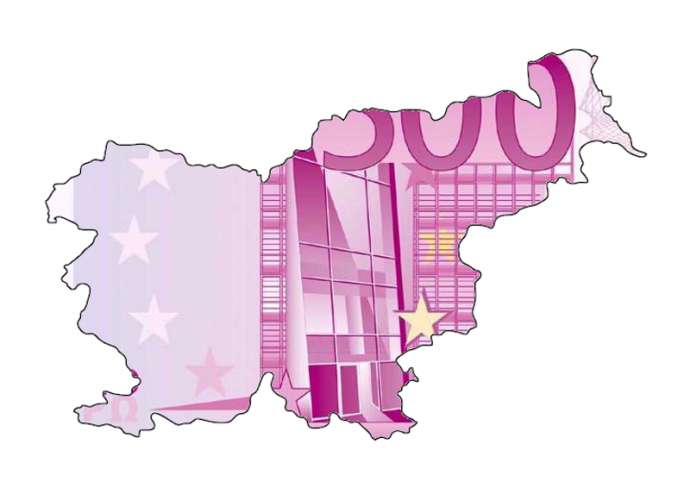STA, 12 January 2019 - Ten years ago Slovenia faced the onset of a major financial and economic turmoil and it was not until 2017 that the country's GDP returned to pre-crisis levels. However, even as some described the period as a lost decade, the economy has emerged from it healthier and more resilient to a potential new crisis.
Related Video: Slovenia's economic problems, 2012
After a few years of rapid expansion peaking at 6.9% in 2007, Slovenia's economy contracted by 7.8% in 2009 in the wake of the outbreak of a global financial crisis in what was one of the biggest slumps in the EU, after those in the Baltic countries and Finland.
After minor upwards corrections in 2010 and 2011, faltering domestic private and state spending and fast-falling investment led to two more years of economic decline, which was exacerbated by a deterioration in the banking sector and the financial market's growing distrust of the country.
The crisis bottomed in the third quarter of 2013 and Slovenia's GDP has been increasing ever since, accelerating up to the annual rate of almost 5%. The growth is estimated to have proceeded at roughly the same pace in 2018, after which it is expected to slow down to about 3% in the coming years.
Despite the accelerated growth seen in the past few years, real GDP did not return to pre-crisis levels until 2017, which means that the country needed almost a decade to come back to the point it departed from at the end of 2008.
A major domestic factor deepening the crisis was a slump in investment, both corporate investment and housing construction and major investments in road and rail infrastructure after a strong growth in the pre-crisis years.
Between 2008 and 2013, the value of construction work was more than halved, before increasing in 2014 driven by completion of EU-subsidised projects, only to fall yet again. It was not until 2017 and 2018 that the sector saw more sustainable double-digit growth rates.
The collapse in the construction industry caused many construction companies to go bust, including giants such as SCT and Primorje. It also paved the way for new and so far minor players to make a breakthrough in the field.
Real GDP growth (%) Real GDP per capita (EUR) 2008 3.3 19,200 2009 -7.8 17,500 2010 1.2 17,700 2011 0.6 17,800 2012 -2.7 17,300 2013 -1.1 17,000 2014 3.0 17,500 2015 2.3 17,900 2016 3.1 18,500 2017 4.9 19,400 * Reference year is 2010
Final household Gross capital General government
consumption formation final consumption
2008 2.6 7.0 4.9
2009 0.9 -22.0 2.4
2010 1.1 -13.3 -0.5
2011 0.0 -4.9 -0.7
2012 -2.4 -8.8 -2.2
2013 -4.2 3.2 -2.1
2014 1.9 1.0 -1.2
2015 2.3 -1.6 2.4
2016 4.0 -3.7 2.7
2017 1.9 10.7 0.5
Value of construction work (%) No. of construction jobs 2006 15.6 72,810 2007 18.5 82,140 2008 15.5 92,140 2009 -21.0 91,280 2010 -17.0 82,970 2011 -24.8 73,230 2012 -16.8 67,700 2013 - 2.6 62,960 2014 19.5 62,290 2015 - 8.2 62,550 2016 -17.7 61,930 2017 17.7 63,550
Source: Slovenia's Statistics Office, Eurostat
An even better indicator of the so-called lost decade is trends in GDP per capita and final individual consumption in purchasing power standards (PPS) as a percentage of EU, as two comparative indicators of a standard of living.
At the end of 2017 Slovenia trailed the pre-crisis level by both measures compared to the EU average. During that time, it has been overtaken by the Czech Republic among the new EU members, while Slovenia and the Baltic countries are catching up.
GDP per capita in PPP
(% of EU average)
2008 89.5
2009 85.1
2010 83.3
2011 83.0
2012 82.0
2013 81.6
2014 82.1
2015 81.8
2016 82.2
2017 84.0
Final individual consumption in PPP
(% of EU average)
2008 80.2
2009 79.9
2010 80.5
2011 80.8
2012 80.4
2013 78.1
2014 77.2
2015 76.5
2016 77.3
2017 77.2
Source: Eurostat
The crisis years and the post-crisis period have also produced some positive developments. The Slovenian economy has undergone a restructuring and boosted its competitive edge, so that exports recovered fast from the major contraction in 2009, and after an interim period of moderate growth, returned to strong growth in 2017. Exports at the end of 2018 are estimated to have outpaced those of 2008 by 50%.
Since exports have been increasing at a much stronger rate than imports, Slovenia also started to post a a trade surplus which (services included) in 2017 amounted to almost 10% of GDP and accelerated to 12% of GDP in the third quarter of 2018.
It was a key factor to the improvement of Slovenia's balance of payments and total economy balance. The latest available data indicate that Slovenia's economy posted a surplus of 9.1% of GDP in transactions with abroad in the third quarter of 2018.
The surplus has put the national economy on much healthier foundations, meaning it is no longer living beyond its means, but rather generates savings.
If Slovenia was a net debtor in the pre-crisis years, the banks settling their foreign debts and corporate deleveraging have turned the financial and corporate sectors and households into net creditors to abroad, so that the only net debtor remains general government, having taken out a great amount of foreign debt during the crisis.
Exports of goods and services Annual change (%)
(EUR bn)
2008 20.0 2.1
2009 16.3 -18.8
2010 18.6 14.6
2011 21.0 12.7
2012 21.1 0.3
2013 21.5 2.3
2014 22.9 6.4
2015 23.9 4.4
2016 25.0 4.3
2017 28.3 13.2
Balance of goods trade (EUR m) Total economy balance/
Current account balance
(% of GDP)
2008 -299.6 -4.8/-5.3
2009 -100.7 -0.2/-0.6
2010 -146.1 0.0/-0.1
2011 -155.6 0.0/0.2
2012 -101.7 2.2/2.1
2013 -565.4 3.6/4.4
2014 355.5 6.0/5.8
2015 635.1 5.6/4.5
2016 859.1 4.6/5.5
2017 658.8 6.3/7.2
Source: Slovenia's Statistics Office, central bank






